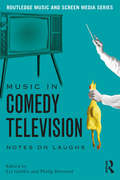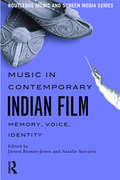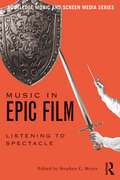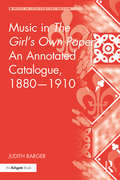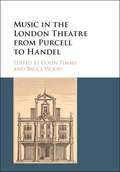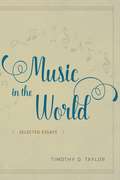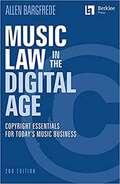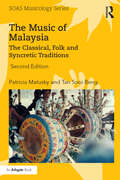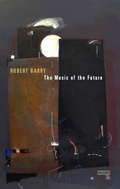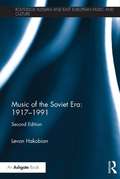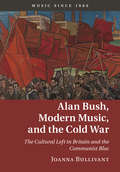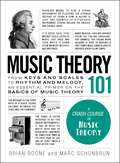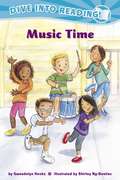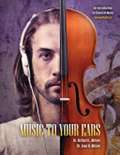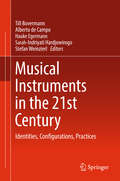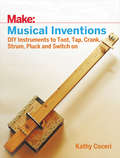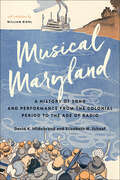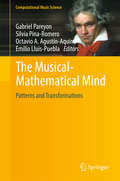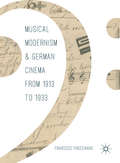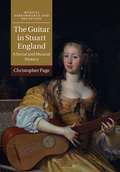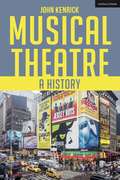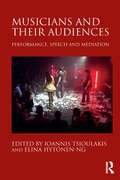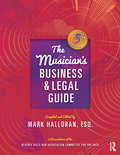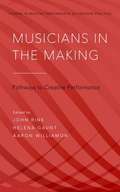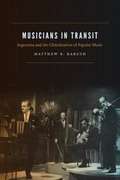- Table View
- List View
Music in Comedy Television: Notes on Laughs
by Liz Giuffre Philip HaywardThe study of television and music has expanded greatly in recent years, yet to date no book has focused on the genre of comedy television as it relates to music. Music in Comedy Television: Notes on Laughs fills that gap, breaking new critical ground. With contributions from an array of established and emerging scholars representing a range of disciplines, the twelve essays included cover a wide variety of topics and television shows, spanning nearly fifty years across network, cable, and online structures and capturing the latest research in this growing area of study. From Sesame Street to Saturday Night Live, from Monty Python to Flight of the Conchords, this book offers the perfect introduction for students and scholars in music and media studies seeking to understand the role of music in comedy onscreen and how it relates to the wider culture.
Music in Contemporary Indian Film: Memory, Voice, Identity
by Jayson Beaster-Jones Natalie SarrazinMusic in Contemporary Indian Film: Memory, Voice, Identity provides a rich and detailed look into the unique dimensions of music in Indian film. Music is at the center of Indian cinema, and India’s film music industry has a far-reaching impact on popular, folk, and classical music across the subcontinent and the South Asian diaspora. In twelve essays written by an international array of scholars, this book explores the social, cultural, and musical aspects of the industry, including both the traditional center of "Bollywood" and regional film-making. Concentrating on films and songs created in contemporary, post-liberalization India, this book will appeal to classes in film studies, media studies, and world music, as well as all fans of Indian films.
Music in Epic Film: Listening to Spectacle
by Stephen C. MeyerAs both a distinct genre and a particular mode of filmmaking, the idea of the epic has been central to the history of cinema. Including contributions from both established and emerging film music scholars, the ten essays in Music in Epic Film: Listening to Spectacle provide a cross-section of contemporary scholarship on the subject. They explore diverse topics, including the function of music in epic narratives, the socio-political implications of cinematic music, and the use of pre-existing music in epic films. Intended for students and scholars in film music, film appreciation, and media studies, the wide range of topics and the diversity of the films that the authors discuss make Music in Epic Film: Listening to Spectacle an ideal introduction to the field of music in epic film.
Music in The Girl's Own Paper: An Annotated Catalogue, 1880-1910 (Music in Nineteenth-Century Britain)
by Judith BargerNineteenth-century British periodicals for girls and women offer a wealth of material to understand how girls and women fit into their social and cultural worlds, of which music making was an important part. The Girl's Own Paper, first published in 1880, stands out because of its rich musical content. Keeping practical usefulness as a research tool and as a guide to further reading in mind, Judith Barger has catalogued the musical content found in the weekly and later monthly issues during the magazine's first thirty years, in music scores, instalments of serialized fiction about musicians, music-related nonfiction, poetry with a musical title or theme, illustrations depicting music making and replies to musical correspondents. The book's introductory chapter reveals how content in The Girl's Own Paper changed over time to reflect a shift in women's music making from a female accomplishment to an increasingly professional role within the discipline, using 'the piano girl' as a case study. A comparison with musical content found in The Boy's Own Paper over the same time span offers additional insight into musical content chosen for the girls' magazine. A user's guide precedes the chronological annotated catalogue; the indexes that follow reveal the magazine's diversity of approach to the subject of music.
Music in the London Theatre from Purcell to Handel
by Colin Timms Bruce WoodThis book is concerned with a hundred years of musical drama in England. It charts the development of the genre from the theatre works of Henry Purcell (and his contemporaries) to the dramatic oratorios of George Frideric Handel (and his). En route it investigates the objections to all-sung drama in English that were articulated in the decades around 1700, various proposed solutions, the importation of Italian opera, and the creation of the dramatic oratorio - English drama, all-sung but not staged. Most of the constituent essays take an in-depth look at a particular aspect of the process, while others draw attention to dramatic qualities in non-dramatic works that also were performed in the theatre. The journey from Purcell to Handel illustrates the vigour and vitality of English theatrical and musical traditions, and Handel's dramatic oratorios and other settings of English words answer questions posed before he was born.
Music in the World: Selected Essays
by Timothy D. TaylorIn music studies, Timothy D. Taylor is known for his insightful essays on music, globalization, and capitalism. Music in the World is a collection of some of Taylor’s most recent writings—essays concerned with questions about music in capitalist cultures, covering a historical span that begins in the late nineteenth and early twentieth centuries and continues to the present. These essays look at shifts in the production, dissemination, advertising, and consumption of music from the industrial capitalism of the nineteenth century to the globalized neoliberal capitalism of the past few decades. In addition to chapters on music, capitalism, and globalization, Music in the World includes previously unpublished essays on the continuing utility of the concept of culture in the study of music, a historicization of treatments of affect, and an essay on value and music. Taken together, Taylor’s essays chart the changes in different kinds of music in twentieth- and twenty-first-century music and culture from a variety of theoretical perspectives.
Music Law in the Digital Age: Learn Copyright Essentials in Order to Succeed in Today's Music Industry
by Allen BargfredeWith the free-form exchange of music files and musical ideas online, understanding copyright laws has become essential to career success in the new music marketplace. This cutting-edge, plain-language guide shows you how copyright law drives the contemporary music industry. By looking at the law and its recent history, you will understand the new issues introduced by the digital age, as well as continuing issues of traditional copyright law. <p><p> Whether you are an artist, lawyer, entertainment Web site administrator, record label executive, student, or other participant in the music industry, this book will help you understand how copyright law affects you, helping you use the law to your benefit.
The Music of Malaysia: The Classical, Folk and Syncretic Traditions (SOAS Musicology Series)
by Patricia Matusky Tan Sooi BengThe Music of Malaysia, first published in Malay in 1997 and followed by an English edition in 2004 is still the only history, appreciation and analysis of Malaysian music in its many and varied forms available in English. The book categorizes the types of music genres found in Malaysian society and provides an overview of the development of music in that country. Analyses of the music are illustrated with many examples transcribed from original field recordings. Genres discussed include theatrical and dance forms, percussion ensembles, vocal and instrumental music and classical music. It is an excellent introduction to and exploration of the country's vibrant musical culture. This new, fully revised and updated edition includes time lines, listening guides and two audio CDs of field recordings that are analysed and discussed in the text.
The Music of the Future
by Robert BarryThe Music of the Future is not a book of predictions or speculations about how to save the music business or the bleeding edge of technologies. Rather, it's a history of failures, mapping 200 years of attempts by composers, performers and critics to imagine a future for music. Encompassing utopian dream cities, temporal dislocations and projects for the emancipation of all sounds, The Music of the Future is in the end a call to arms for everyone engaged in music: "to fail again, fail better."
Music of the Soviet Era: 2nd Edition (Routledge Russian and East European Music and Culture)
by Levon HakobianThis volume is a comprehensive and detailed survey of music and musical life of the entire Soviet era, from 1917 to 1991, which takes into account the extensive body of scholarly literature in Russian and other major European languages. In this considerably updated and revised edition of his 1998 publication, Hakobian traces the strikingly dramatic development of the music created by outstanding and less well-known, ‘modernist’ and ‘conservative’, ‘nationalist’ and ‘cosmopolitan’ composers of the Soviet era. The book’s three parts explore, respectively, the musical trends of the 1920s, music and musical life under Stalin, and the so-called ’Bronze Age’ of Soviet music after Stalin’s death. Music of the Soviet Era: 1917–1991 considers the privileged position of music in the USSR in comparison to the written and visual arts. Through his examination of the history of the arts in the Soviet state, Hakobian’s work celebrates the human spirit’s wonderful capacity to derive advantage even from the most inauspicious conditions.
Music since 1900: The Cultural Left in Britain and the Communist Bloc (Music since 1900)
by Joanna BullivantThe first major study of Alan Bush, this book provides new perspectives on twentieth-century music and communism. British communist, composer of politicised works, and friend of Soviet musicians, Bush proved to be 'a lightning rod' in the national musical culture. His radical vision for British music prompted serious reflections on aesthetics and the rights of artists to private political opinions, as well as influencing the development of state-sponsored music making in East Germany. Rejecting previous characterisations of Bush as political and musical Other, Joanna Bullivant traces his aesthetic project from its origins in the 1920s to its collapse in the 1970s, incorporating discussion of modernism, political song, music theory, opera, and Bush's response to the Soviet music crisis of 1948. Drawing on a wealth of archival sources, including recently released documents from MI5, this book constructs new perspectives on the 'cultural Cold War' through the lens of the individual artist.
Music Theory 101: From Keys and Scales to Rhythm and Melody, an Essential Primer on the Basics of Music Theory (Adams 101)
by Brian Boone Marc SchonbrunLearn the basics of music theory in this comprehensive and accessible guide.From classical to hard rock, and jazz to hip hop, music is constantly evolving. But its fundamental principles remain largely unchanged. Understanding these basics is key to becoming a successful musician, composer, or well-rounded music lover. Music Theory 101 covers everything novice musicians and lifelong learners need to know, including:-How to read sheet music-Understanding the construction of chords and scales-The different rhythm and time signatures-How keys are identified and organizedFull of music trivia, music history, comprehensive instruction, and visual aids of scales, music symbols, and chords, Music Theory 101 is the essential guide you need for a crash course in music theory that even professional musicians would envy.
Music Time
by Gwendolyn Hooks Shirley Ng-BenitezHenry dreams of becoming a rock star drummer and practices at home whenever he can. One day while Henry is drumming, his mom has to work, and asks him to stop playing. Henry decides to go outside to play his drum and he sees his friends. Henry wants to keep practicing, but he also wants to play with his friends. By playing Freeze Dance, he can do both. And when his mother finishes work that evening, they figure out how to enjoy music together too.
Music to Your Ears: An Introduction to Classical Music
by Richard L Mcgee Joan B McgeeMusic to Your Ears: An Introduction to Classical Music
Musical Instruments in the 21st Century
by Till Bovermann Alberto De Campo Hauke Egermann Sarah-Indriyati Hardjowirogo Stefan WeinzierlBy exploring the many different types and forms of contemporary musical instruments, this book contributes to a better understanding of the conditions of instrumentality in the 21st century. Providing insights from science, humanities and the arts, authors from a wide range of disciplines discuss the following questions: #65533; What are the conditions under which an object is recognized as a musical instrument? #65533; What are the actions and procedures typically associated with musical instruments? #65533; What kind of (mental and physical) knowledge do we access in order to recognize or use something as a musical instrument? #65533; How is this knowledge being shaped by cultural conventions and temporal conditions? #65533; How do algorithmic processes 'change the game' of musical performance, and as a result, how do they affect notions of instrumentality? #65533; How do we address the question of instrumental identity within an instrument's design process? #65533; What properties can be used to differentiate successful and unsuccessful instruments? Do these properties also contribute to the instrumentality of an object in general? What does success mean within an artistic, commercial, technological, or scientific context?
Musical Inventions: DIY Instruments to Toot, Tap, Crank, Strum, Pluck, and Switch On
by Kathy CeceriPeople have been playing music on homemade instruments for thousands of years. But creating new instruments is much more than an art form. When you want to make a note sound higher or lower, you have to change the sound waves coming out of the instrument. That's science! When you explore the way different materials produce different sounds, that's engineering. When you speed up or slow down a song, you're counting beats -- using math. And technology makes electronic instruments and devices to record and play back music possible.
Musical Maryland: A History of Song and Performance from the Colonial Period to the Age of Radio
by David K. Hildebrand Elizabeth M. SchaafThe only book to delve deeply into Maryland’s rich musical performance history and the people who created it.In Musical Maryland, the first comprehensive survey of the music emanating from the Old Line State, David K. Hildebrand and Elizabeth M. Schaaf explore the myriad ways in which music has enriched the lives of Marylanders. From the drinking songs of colonial Annapolis, the liturgical music of the Zion Lutheran Church, and the work songs of the tobacco fields to the exuberant marches of late nineteenth-century Baltimore Orioles festivals, Chick Webb’s mastery on drums, and the triumphs of the Baltimore Opera Society, this richly illustrated volume explores more than 300 years of Maryland’s music history.Beginning with early compositions performed in private settings and in public concerts, this book touches on the development of music clubs like the Tuesday Club, the Florestan Society, and H. L. Mencken’s Saturday Night Club, as well as lasting institutions such as the Peabody Institute and the Baltimore Symphony Orchestra (BSO). Yet the soundscape also includes militia quicksteps, sea chanteys, and other work songs. The book describes the writing of "The Star-Spangled Banner"—perhaps Maryland's single greatest contribution to the nation's musical history. It chronicles the wide range of music created and performed by Maryland’s African American musicians along Pennsylvania Avenue in racially segregated Baltimore, from jazz to symphonic works. It also tells the true story of a deliberately integrated concert that the BSO staged at the end of World War II. The book is full of musical examples, engravings, paintings, drawings, and historic photographs that not only portray the composers and performers but also the places around the state in which music flourished. Illuminating sidebars by William Biehl focus on late nineteenth- and early twentieth-century song of the kind evoked by the USS Baltimore or inspired by the state's history, natural beauty, and romantic steamboats. The book also offers a sampling of the tunes that Maryland’s more remarkable composers and performers, including Billie Holiday, Eubie Blake, and Cab Calloway, contributed to American music before the homogenization that arrived in earnest after World War II.Bringing to life not only portraits of musicians, composers, and conductors whose stories and recollections are woven into the fabric of this book, but also musical scores and concert halls, Musical Maryland is an engaging, authoritative, and bold look at an endlessly compelling subject.
The Musical-Mathematical Mind
by Gabriel Pareyon Silvia Pina-Romero Octavio A. Agustín-Aquino Emilio Lluis-PueblaThis book presents a deep spectrum of musical, mathematical, physical, and philosophical perspectives that have emerged in this field at the intersection of music and mathematics. In particular the contributed chapters introduce advanced techniques and concepts from modern mathematics and physics, deriving from successes in domains such as Topos theory and physical string theory. The authors include many of the leading researchers in this domain, and the book will be of value to researchers working in computational music, particularly in the areas of counterpoint, gesture, and Topos theory.
Musical Modernism and German Cinema from 1913 to 1933
by Francesco FinocchiaroThis book investigates the relationship between musical Modernism and German cinema. It paves the way for anunorthodox path of research, one which has been little explored up until now. The main figures of musical Modernism, from Alban Berg to Paul Hindemith, and from Richard Strauss to Kurt Weill, actually had a significant relationship with cinema. True, it was a complex and contradictory relationship in which cinema often emerged more as an aesthetic point of reference than an objective reality; nonetheless, the reception of the language and aesthetic of cinema had significant influence on the domain of music. Between 1913 and 1933, Modernist composers' exploration of cinema reached such a degree of pervasiveness and consistency as to become a true aesthetic paradigm, a paradigm that sat at the very heart of the Modernist project. In this insightful volume, Finocchiaro shows that the creative confrontation with the avant-garde medium par excellence can be regarded as a vector of musical Modernism: a new aesthetic paradigm for the very process - of deliberate misinterpretation, creative revisionism, and sometimes even intentional subversion of the Classic-Romantic tradition - which realized the "dream of Otherness" of the Modernist generation.
Musical Performance and Reception: A Social and Musical History (Musical Performance and Reception)
by Christopher PageThis is the first history of the guitar during the reign of the Stuarts, a time of great political and social upheaval in England. In this engaging and original volume, Christopher Page gathers a rich array of portraits, literary works and other, previously unpublished, archival materials in order to create a comprehensive picture of the guitar from its early appearances in Jacobean records, through its heyday at the Restoration court in Whitehall, to its decline in the first decades of the eighteenth century. The book explores the passion of Charles II himself for the guitar, and that of Samuel Pepys, who commissioned the largest repertoire of guitar-accompanied song to survive from baroque Europe. Written in Page's characteristically approachable style, this volume will appeal to general readers as well as to music historians and guitar specialists.
Musical Theatre: A History
by John KenrickMusical Theatre: A History is a new revised edition of a proven core text for college and secondary school students – and an insightful and accessible celebration of twenty-five centuries of great theatrical entertainment. <p><p> As an educator with extensive experience in professional theatre production, author John Kenrick approaches the subject with a unique appreciation of musicals as both an art form and a business. Using anecdotes, biographical profiles, clear definitions, sample scenes and select illustrations, Kenrick focuses on landmark musicals, and on the extraordinary talents and business innovators who have helped musical theatre evolve from its roots in the dramas of ancient Athens all the way to the latest hits on Broadway and London's West End. <p> Key improvements to the second edition: <p> · A new foreword by Oscar Hammerstein III, a critically acclaimed historian and member of a family with deep ties to the musical theatre, is included <p> · The 28 chapters are reformatted for the typical 14 week, 28 session academic course, as well as for a two semester, once-weekly format, making it easy for educators to plan a syllabus and reading assignments. <p> · To make the book more interactive, each chapter includes suggested listening and reading lists, designed to help readers step beyond the printed page to experience great musicals and performers for themselves. <p> A comprehensive guide to musical theatre as an international phenomenon, Musical Theatre: A History is an ideal textbook for university and secondary school students.
Musicians and their Audiences: Performance, Speech and Mediation
by Ioannis Tsioulakis Elina Hytönen-NgHow do musicians play and talk to audiences? Why do audiences listen and what happens when they talk back? How do new (and old) technologies affect this interplay? This book presents a long overdue examination of the turbulent relationship between musicians and audiences. Focusing on a range of areas as diverse as Ireland, Greece, India, Malta, the US, and China, the contributors bring musicological, sociological, psychological, and anthropological approaches to the interaction between performers, fans, and the industry that mediates them. The four parts of the book each address a different stage of the relationship between musicians and audiences, showing its processual nature: from conceptualisation to performance, and through mediation to off-stage discourses. The musician/audience conceptual division is shown, throughout the book, to be as problematic as it is persistent.
The Musician's Business and Legal Guide, Fifth Edition
by Mark HalloranThe Musician’s Business and Legal Guide provides vital information to help demystify the music business and the complex body of law that shapes it. This book answers such questions as how to protect name and copyright; what is and is not legal about sampling; what are the legal issues surrounding digital downloads and streaming; what are the jobs of managers, talent agents and publishers; what are common contractual relationship between independent and major labels. The new edition includes chapters not covered in depth by other books: social media law, TV talent shows, YouTube, and international copyright. As in previous editions, the book features clause-by-clause contract analyses for 360 record deals, music publishing, management, and producer agreements.
Musicians in the Making: Pathways to Creative Performance (Studies In Musical Performance As Creative Practice Series)
by John Rink Helena Gaunt Aaron WilliamonThis book explores the creative development of musicians in both formal and informal learning contexts. It promotes a novel view of creativity, emphasizing its location within creative processes rather than understanding it as an innate quality. It argues that such processes may be learned and refined, and furthermore that collaboration and interaction within group contexts carry significant potential to inform and catalyze creative experiences and outcomes. The book also traces and models the ways in which creative processes evolve over time. Performers, music teachers and researchers will find the rich body of material assembled here engaging and enlightening. The book's three parts focus in turn on 'Creative learning in context', 'Creative processes' and 'Creative dialogue and reflection'. In addition to sixteen extended chapters written by leading experts in the field, the volume includes ten 'Insights' by internationally prominent performers, performance teachers and others. Practical aids include abstracts and lists of keywords at the start of each chapter, which provide useful overviews and guidance on content. Topics addressed by individual authors include intrapersonal and interpersonal dynamics, performance experience, practice and rehearsal, 'self-regulated performing', improvisation, self-reflection, expression, interactions between performers and audiences, assessment, and the role of academic study in performers' development.
Musicians in Transit: Argentina and the Globalization of Popular Music
by Matthew B. KarushIn Musicians in Transit Matthew B. Karush examines the transnational careers of seven of the most influential Argentine musicians of the twentieth century: Afro-Argentine swing guitarist Oscar Alemán, jazz saxophonist Gato Barbieri, composer Lalo Schifrin, tango innovator Astor Piazzolla, balada singer Sandro, folksinger Mercedes Sosa, and rock musician Gustavo Santaolalla. As active participants in the globalized music business, these artists interacted with musicians and audiences in the United States, Europe, and Latin America and contended with genre distinctions, marketing conventions, and ethnic stereotypes. By responding creatively to these constraints, they made innovative music that provided Argentines with new ways of understanding their nation’s place in the world. Eventually, these musicians produced expressions of Latin identity that reverberated beyond Argentina, including a novel form of pop ballad; an anti-imperialist, revolutionary folk genre; and a style of rock built on a pastiche of Latin American and global genres. A website with links to recordings by each musician accompanies the book.
